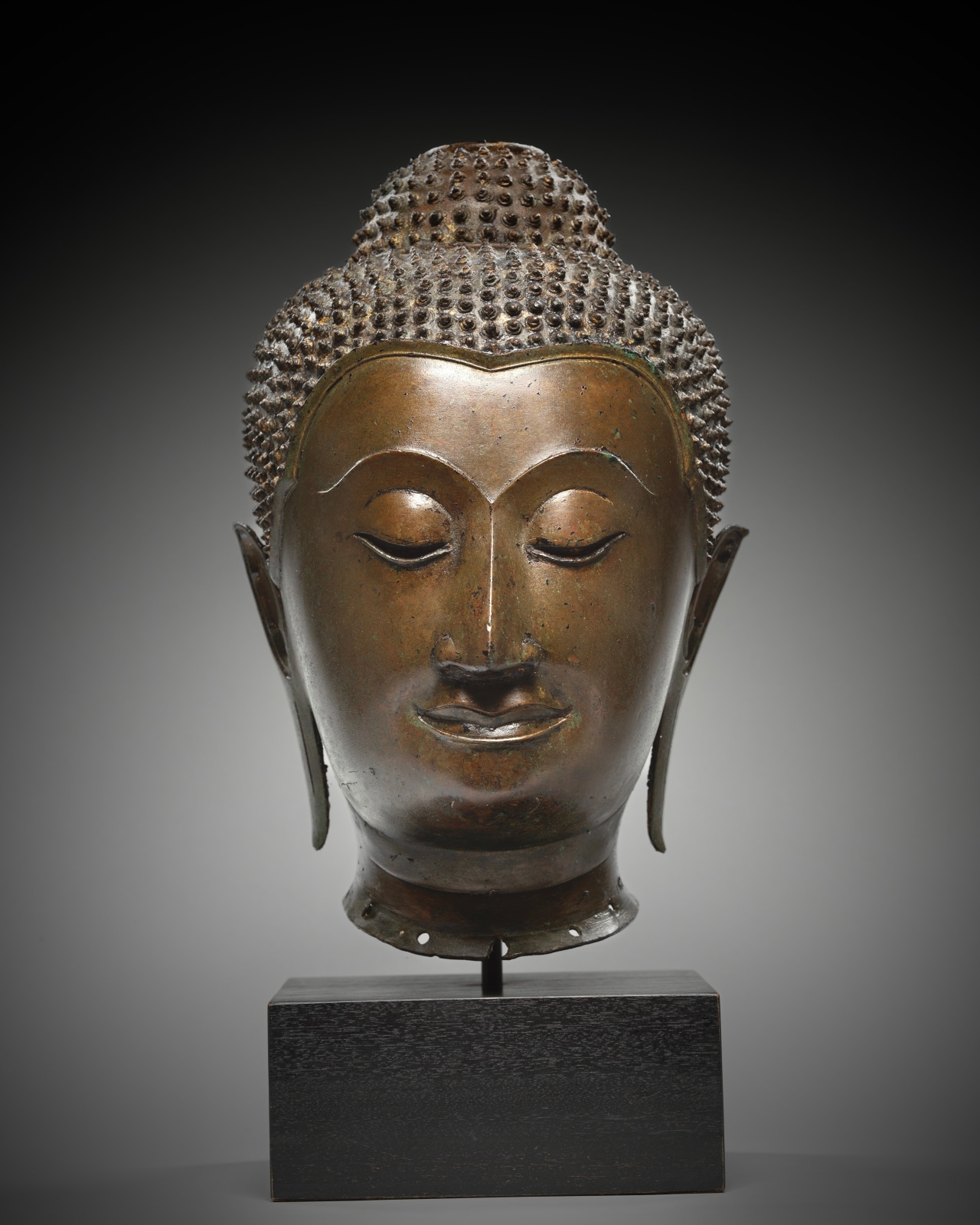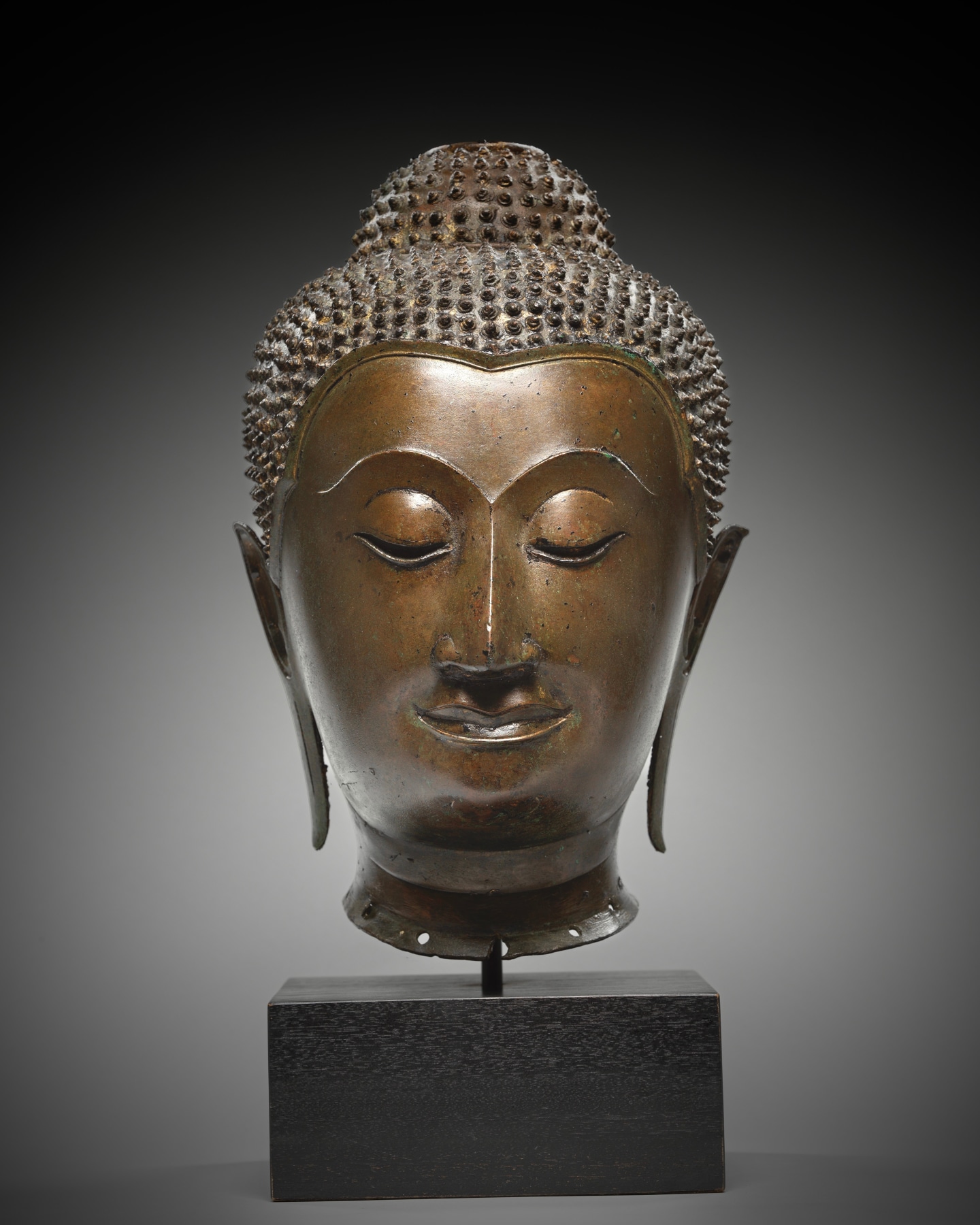
Provenance:
European Private Collection, acquired in the 1990s
Buddha is portrayed here with a countenance that is both benign and deeply spiritual. His downcast eyes are recessed for inlay with lacquer (and possibly mother-of-pearl) and accentuated by elegantly-arched eyebrows in relief. His enigmatic smile is achieved with delicately-outlined lips gently upturned at the corners. The hair is arranged in rows of snail-shell curls that cover his dome-shaped ushnisha, the cranial protuberance signifying transcendent wisdom. The top of the ushnisha is recessed for the insertion of a flaming finial.
Buddhist art produced during the Sukhothai Kingdom (1238-1438) of North-Central Thailand displays a remarkably cohesive style. During this "Golden Age" of Thai art, the kingdom's Theravada affiliation inspired the production of serene Buddha figures. The faces are characterized by an oblong shape with full cheeks and ears flared slightly at the tips, and the heavy-lidded eyes angle slightly towards the nose to reinforce the interior nature of the gaze. Although it lasted only two centuries, the Sukhothai Kingdom gave birth to a school of art in Thailand that is considered comparable to that of the Gupta Dynasty in India in terms of both artistry and influence. Sukhothai sculptures are recognized as some of the most beautiful ever produced.

